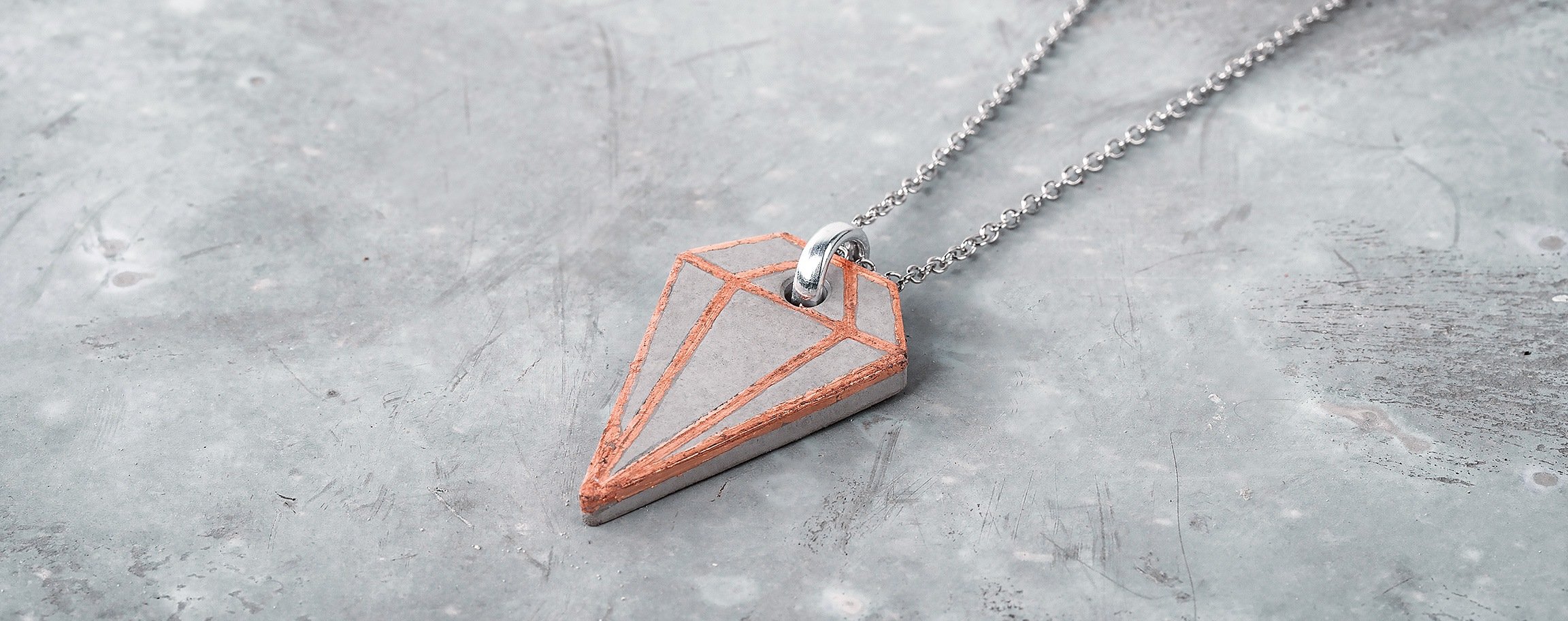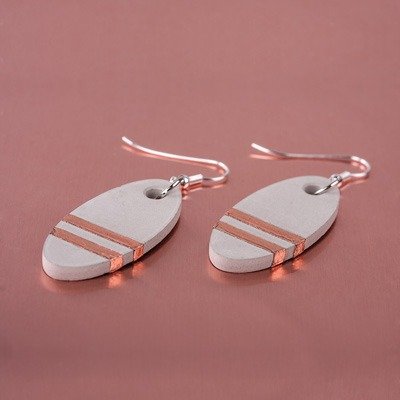
Instructions in 9 steps You should apply the gilding adhesive for decorative metal flakes exactly onto the lines you have drawn previously. This is how you get this great copper-coloured pattern. And this is how it works:
1 ![]()

Step 1
To cast the jewellery-cement-pendant you need an elastic casting mould, a digital scale and a small plastic container as well a craft wooden stick for stirring. The mixing ratio: 1 part of water : 5 parts of jewellery-cement.2 ![]()

Step 2
First, weigh the water in a cup and then add gradually the jewellery-cement. Stir it with a craft wooden stick until a homogeneous mass arises.3 ![]()

Step 3
Now, you can fill the mould with the casting compound. The mould should always be cleaned with detergent and water before being filled. If bubbles occur, you should tap few times the mould on the pad.4 ![]()

Step 4
The temperature and the current air humidity determine the drying time. It is however advisable to demould the pendant only the next day. Allow post drying.5 ![]()

Step 5
The upper side, in other words the subsequent reverse side, you can rectify with some fine sandpaper.6 ![]()

Step 6
In order to decorate the jewellery-cement pendant with a decorative metal, sketch out the cutting lines by using pencil and ruler. Spread the application milk accurately with a fine brush on, free rein. Let it dry for about 5 minutes.7 ![]()

Step 7
Lay on crease-free the flake-shaped decorative metal on the lines covered by the application milk. Press slightly the decorative metal with a finger. Now you can remove the overhanging flakes with a clean flat brush by spreading them horizontally over the decorative metal surface.8 ![]()

Step 8
For sealing, spread accurately the Deco Metal Protective Varnish with a fine clean brush onto the metallic surface. Let it dry well.9 ![]()


























